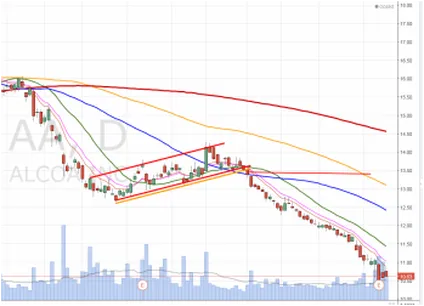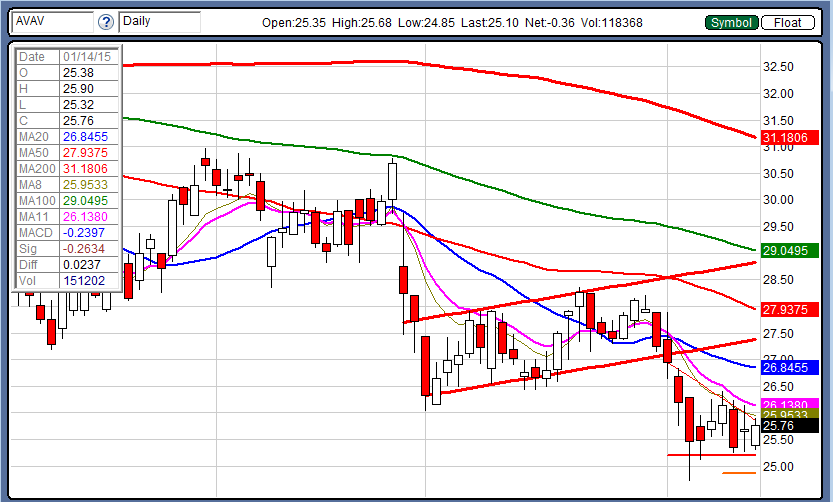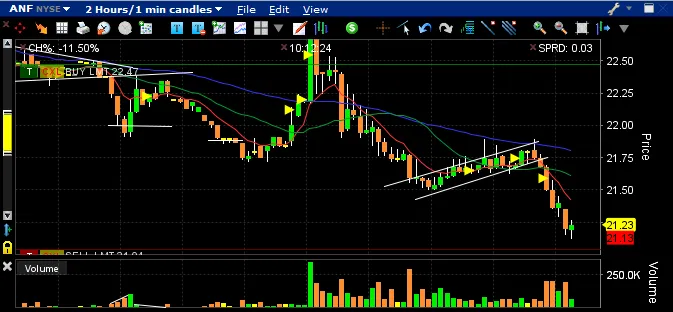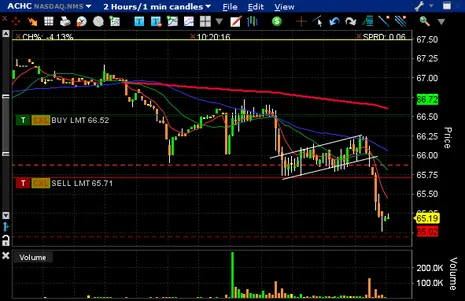
Bear Flag Trading Pattern

Summary:
Bear Flag Definition:
A Bear Flag is a price action within the context of a downtrend that produces an orderly price increase consisting of a narrow trend range comprised of higher swing/pivot highs and higher swing/pivot lows.
Background:
The success of a Bear Flag can be greater after a significant downside move due to the possible increase of overhead resistance.
Bear Flags can be stronger when the swing low that begins the pattern is also an all time low due to the possible lack of underlying support.
Practical Use:
Traders interested in gaining additional confirmation by watching the sentiment read of a chart, will often seek out Bear Flag patterns due to their ability to "prove" the lack of buying interest during the timeframe in question.

Bear Flag Trade Setup:
This is a continuation pattern that appears after a strong downtrend. It signals potential continuation in the prevailing bearish direction after a brief consolidation.
Components:
Flag Pole: A strong and almost vertical downtrend that often occurs on high volume. This represents strong selling momentum.
Flag: A consolidation phase that follows the flag pole. It's a rectangle pattern that slopes against the prevailing trend (meaning it's inclined upward). It's typically characterized by decreasing volumes.
Entry & Exit:
Entry: Traders often enter a short position once the price breaks down from the flag pattern, especially if this move is accompanied by an increase in volume.
Target Price: The projected continuation (or target price) is typically equivalent to the length of the flag pole subtracted from the breakout point.
Stop Loss: A common strategy is to place a stop loss just above the highest point of the flag.

Predictability & Factors to Consider:
Duration of the Flag: Bear flags typically last between one and three weeks. Flags that last longer might not be as reliable in predicting continuation.
Volume: The volume should decline during the flag's formation and then notably increase during the breakout to the downside. This supports the continuation thesis.
Trend Confirmation: The bear flag should align with the stock's overall trend. If the long-term trend is bearish, the bear flag is seen as a more reliable continuation pattern

Trade Example:
Suppose a stock that's been on a strong downward trend has recently fallen from $70 to $50 within a week, forming the flag pole. After this sharp decline, it consolidates in an upward sloping rectangle pattern between $52 and $55 for a week and a half. If the stock breaks below the rectangle pattern (the flag) on high volume, especially if it moves below $52 with conviction, a trader might anticipate a continuation of the bear trend. Given the flag pole's height of $20, a trader might set a target of $32 ($52 - $20).
WARNING: As with any technical pattern, it's crucial to be cautious and understand that the bear flag, while having shown predictability in certain scenarios, is not infallible. Other external factors and unforeseen events can influence the stock's price and make it diverge from the movement predicted based on technical analysis. Always employ a combination of indicators and thorough due diligence for more robust decision-making.

Get 6 (downloadable) trading tutorials emailed to you right now--FREE.

